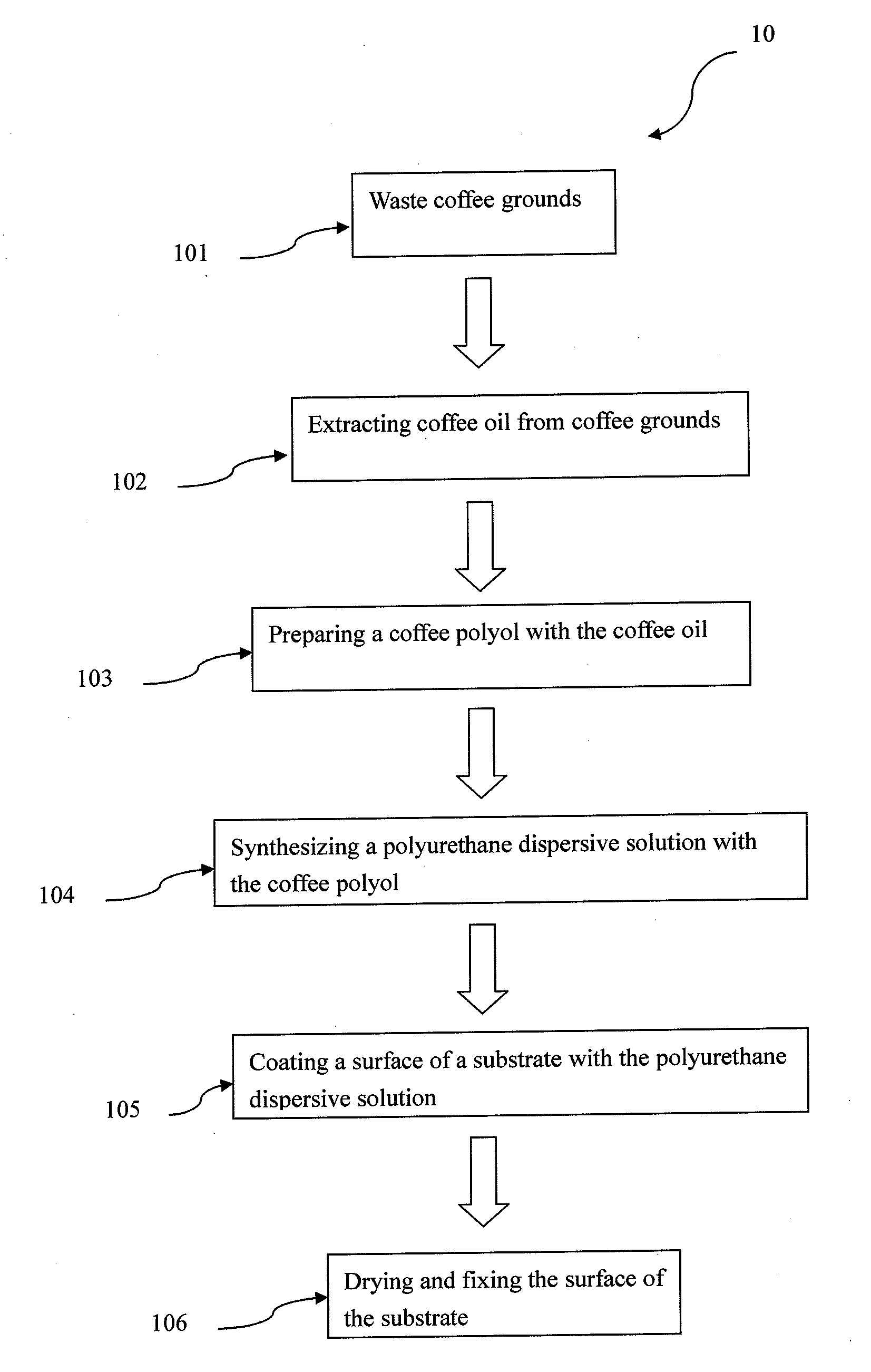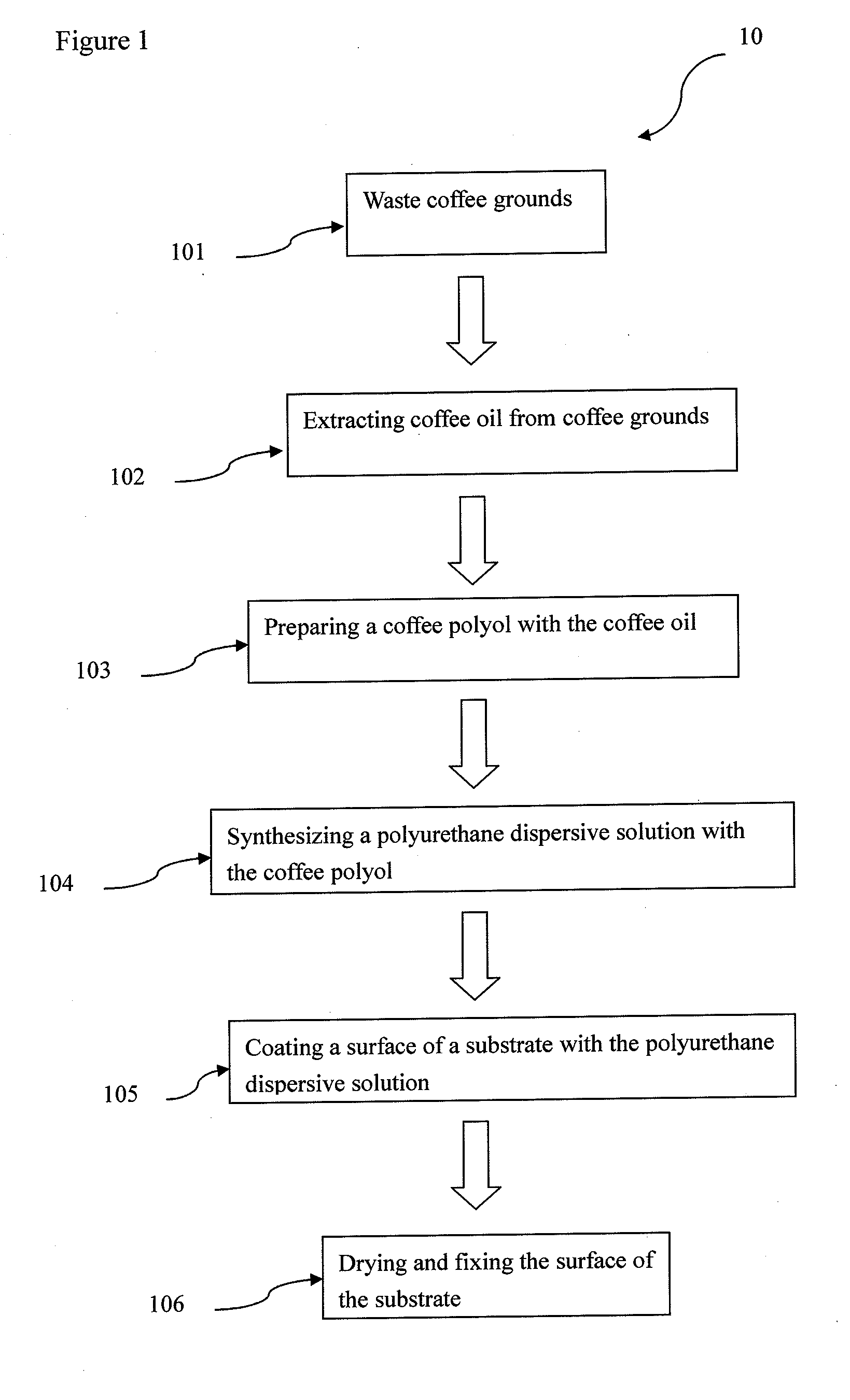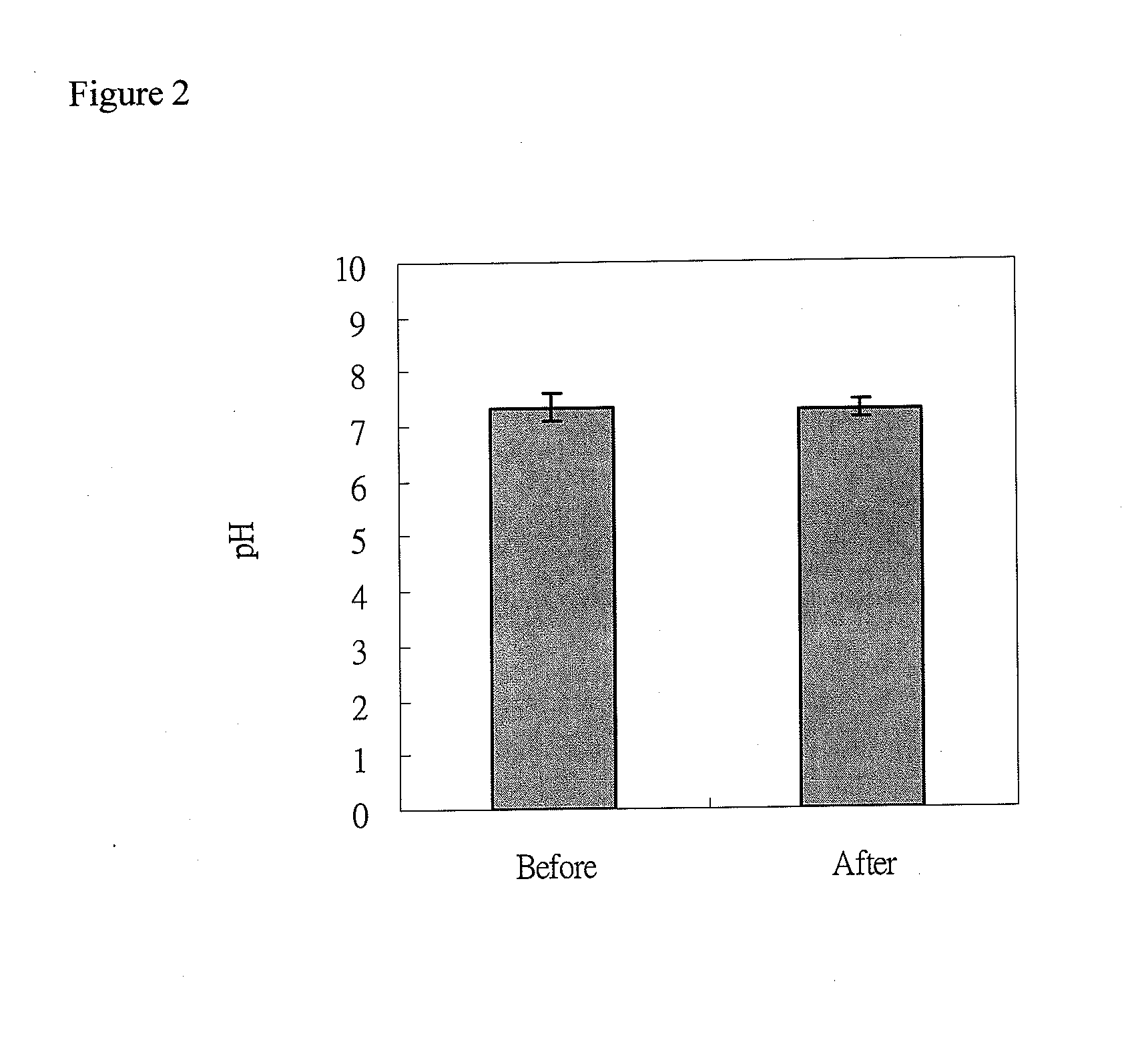Method for preparing a functional film via coffee oil and textile thereof
- Summary
- Abstract
- Description
- Claims
- Application Information
AI Technical Summary
Benefits of technology
Problems solved by technology
Method used
Image
Examples
example 1
Method For Extracting a Coffee Oil:
[0047]28 kg coffee grounds (101) were stirred at 80° C. for 2 hours to remove water and 14 kg dry coffee grounds were obtained. Then, coffee oil was extracted by supercritical carbon dioxide. 14 kg coffee grounds after removal of water were divided into two groups of 7 kg, each group was filled evenly into a 20 L extraction tank along with 2 kg glass beads (particle size of 5 mm), respectively. The oil was extracted by high pressure pump with carbon dioxide of 463 g / min flow rate. The pressure in the extraction tank was controlled at 5075 psig. The temperature in the extraction tank was 65° C. The pressure in the separation chamber was 900 psig. The temperature in the separation chamber was 70° C. After 400 minutes extraction, 1.68 kg coffee oil was collected (102).
example 2
Preparing Coffee Polyol Via the Coffee Oil (103)
[0048]20 kg coffee oil extracted through the method above was added into 1.4 kg glacial acetic acid and 2 kg pure water in a 100 kg reaction tank with catalysts of 120 g sulfuric acid and 500 g acetic acid, and then mixed evenly. After heated to 70° C., 12 kg hydrogen peroxide (35%) was slowly added within 3 hours. After reaction of 3.5 hours, the mixture was washed six times with 20 kg pure water. The water layer in the bottom was separated before 11 kg methanol (95%) was added. After reflux for 8 hours at 68° C., the methanol was removed by a vacuum system device to obtain about 20 kg coffee polyol.
example 3
Synthesizing a Water-Based Polyurethane (PU) Dispersive Solution (104) With the Coffee Polyol (104)
[0049]34 g coffee polyol after removal of water, 145 g Poly(tetramethylene ether)glycol (PTMG), 45 g poly propylene glycol (PPG) and 18 g dimethylol propionic acid (DMPA) were added in a four-necked flat-bottomed flask and mixed evenly with a rotational speed of 500 rpm at 70° C. under a nitrogen atmosphere. 90 g IPDI was slowly added after dissolution to begin the reaction at 85° C. The reaction was monitored by the NCO content of isocynate terminated prepolymer using a titration method of ASTM-D1368. When the NCO content of the prepolymer is less than 90% of the theoretical value, the temperature was cooled down to 60° C. 13.5 g triethylamine (TEA) was added to neutralize the reaction for 10 minutes. After completion of the neutralization reaction, the temperature was dropped to room temperature. 77 g coffee polyol was added for emulsification to obtain a 27% coffee oil of prepolymer...
PUM
 Login to View More
Login to View More Abstract
Description
Claims
Application Information
 Login to View More
Login to View More - R&D Engineer
- R&D Manager
- IP Professional
- Industry Leading Data Capabilities
- Powerful AI technology
- Patent DNA Extraction
Browse by: Latest US Patents, China's latest patents, Technical Efficacy Thesaurus, Application Domain, Technology Topic, Popular Technical Reports.
© 2024 PatSnap. All rights reserved.Legal|Privacy policy|Modern Slavery Act Transparency Statement|Sitemap|About US| Contact US: help@patsnap.com










